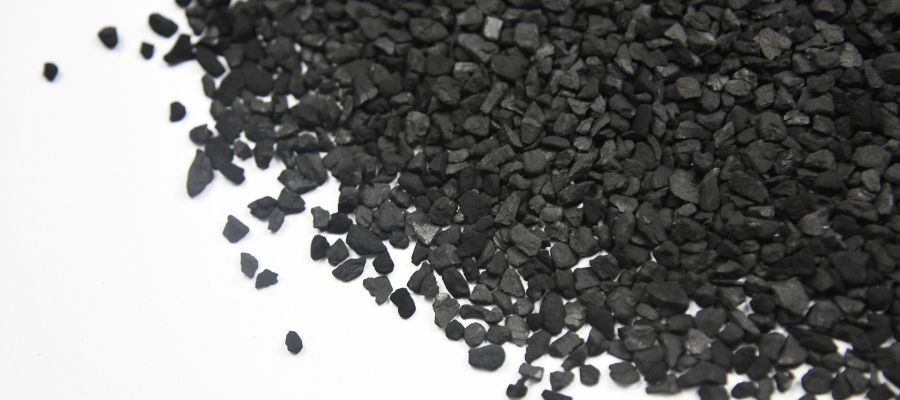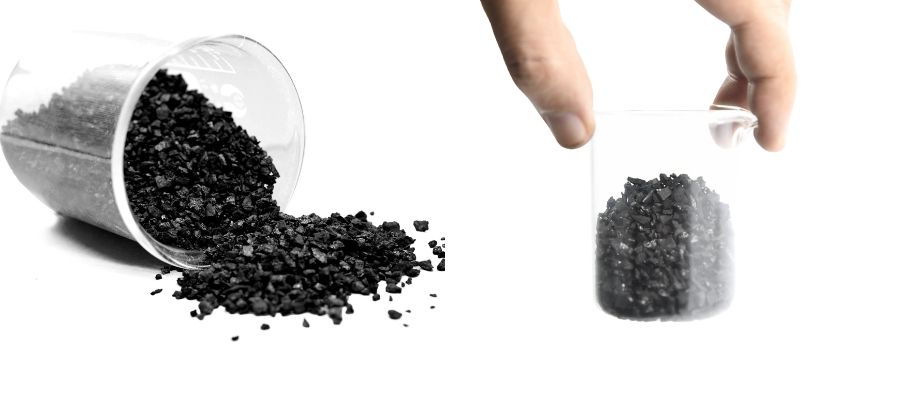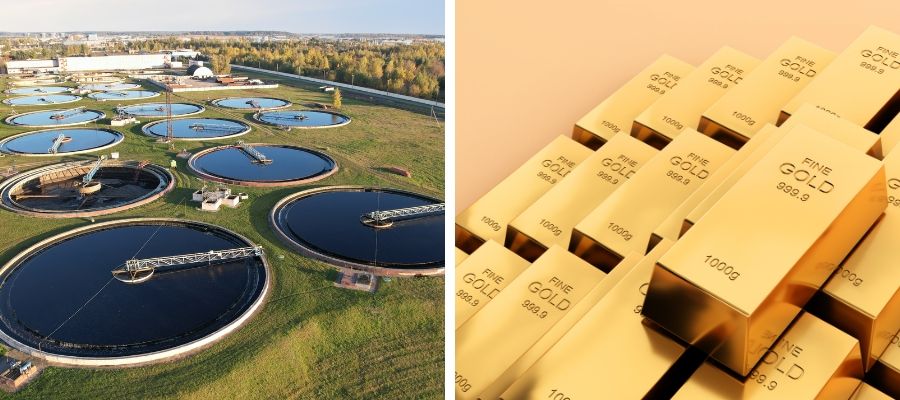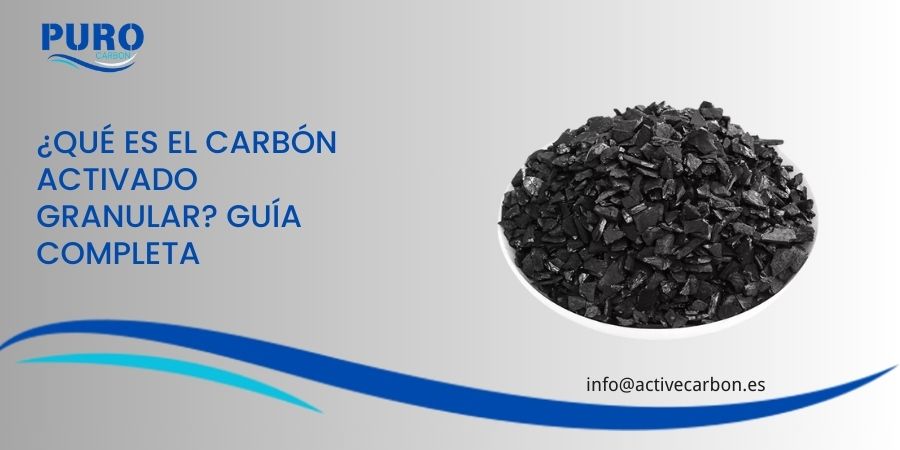Granular activated carbon is a fascinating material that plays a crucial role in numerous industries and applications. This versatile and highly effective product has revolutionized purification and filtration processes worldwide.
In this article, we will explore in depth what granular activated carbon is, its unique characteristics, its various uses and why it has become an indispensable component in multiple industries.
From its manufacturing process to its most innovative applications, we will discover why granular activated carbon is such a powerful and in-demand solution. Join us on this journey to unravel the secrets of granular activated carbon!
What Is Granular Activated Carbon?

Granular activated carbon is a specific form of activated carbon characterized by its porous structure and large surface area. This material is produced from various carbonaceous raw materials, such as coconut shells, charcoal, wood and other organic materials, which are subjected to a physical or chemical activation process.
Granular activated carbon is distinguished from other forms of activated carbon by its particle size, which generally ranges from 0.2 to 5 mm. This characteristic gives it unique properties that make it ideal for a wide range of applications, especially in filtration and purification processes.
One of the most remarkable characteristics of granular activated carbon is its outstanding adsorption capacity. Thanks to its porous structure and large surface area, which can reach up to 1500 m²/g, GAC can effectively trap a wide variety of contaminants and unwanted compounds in gases and liquids.
Request a QuoteGranular Activated Carbon Manufacturing Process
The production of granular activated carbon is a complex process involving several carefully controlled stages. The general manufacturing process is described below:
- Raw material selectionThe process begins with the choice of the right raw material. In PuroCarbon S.L., we use a variety of materials such as coconut shell, coal y wood to produce high quality granular activated carbon.
- CarbonizationThe raw material undergoes a carbonization process, where it is heated to high temperatures (400-900°C) in the absence of oxygen. This step eliminates the volatile components and creates an initial porous structure.
- ActivationActivation phase: The activation phase is essential to develop porosity and increase the surface area of charcoal, and there are two main methods: physical and chemical activation. Physical activation consists of exposing the charcoal to an oxidizing gas (e.g., water vapor or carbon dioxide) at 800-1000°C.
The activation phase is carried out by means of a chemical reagent such as water vapor or carbon dioxide. On the other hand, chemical activation consists of impregnating the material with a chemical reagent, such as phosphoric acid or zinc chloride, prior to carbonization. - GranulationThe activated carbon is crushed and classified according to the desired particle size to obtain the granular form.
- Washing and dryingThe product is washed to remove impurities and carefully dried.
- Quality controlRigorous testing is carried out to ensure that the granular activated carbon meets the required specifications.
Granular Activated Carbon Characteristics and Properties

Granular activated carbon possesses a number of characteristics and properties that make it extremely valuable in a variety of applications:
- High adsorption capacityThanks to its porous structure and large surface area, GAC can effectively adsorb a wide range of contaminants.
- VersatilityIt is effective in both liquid and gas phase, which makes it useful in multiple industries.
- RegenerabilityUnlike other filter materials, granular activated carbon can be regenerated and reused several times, which makes it economically attractive.
- Mechanical resistanceGranular shape provides good resistance to wear and abrasion, allowing its use in continuous flow systems.
- Low pressure dropCompared to powdered activated carbon, GAC offers lower flow resistance, which is beneficial in many filtration applications.
- SelectivityDepending on its origin and method of activation, the GAC can be designed to be more selective towards certain contaminants.
Granular Activated Carbon Applications

Granular activated carbon finds application in a wide range of industries and processes due to its unique properties. Some of the most common applications include:
- Water treatmentGranular activated carbon is widely used in drinking water purification, removing organic contaminants, chlorine, unpleasant tastes and odors. It is also effective in the treatment of industrial wastewater.
- Air purificationIn ventilation and air purification systems, granular activated carbon effectively removes odors, volatile organic compounds (VOCs) and other gaseous contaminants.
- Gold recovery: The activated carbon for gold recovery is essential in the mining industry, where it is used to adsorb gold from leaching solutions.
- Food industryIt is used in the decolorization and purification of food and beverages, as well as in the production of sugar and in the elimination of impurities in alcoholic beverages.
- Industrial gas treatmentGAC is used to remove contaminants and recover solvents in industrial processes.
- MedicineIn medical applications, granular activated carbon is used in hemodialysis systems and in the treatment of poisoning.
- CatalysisIt serves as a support for catalysts in various chemical reactions.
Conclusion
Granular activated carbon's unique ability to adsorb a wide range of contaminants, coupled with its versatility and regeneration capabilities, make it an indispensable solution to the purification and treatment challenges of the modern world.
From drinking water treatment to gold recovery, granular activated carbon continues to play a crucial role in process improvement and environmental protection. Its importance only seems to increase as new applications are discovered and new pollution challenges are faced.
If you are looking for high quality granular activated carbon solutions for your specific industry or application, we invite you to explore our product range at PuroCarbon S.L. With over 18 years of experience in the activated carbon market, we offer a wide variety of options to meet your needs.
Do not hesitate to contact us at for more information or to request a customized quotation. Together, we can find the perfect solution for your purification and treatment requirements.
Frequently Asked Questions
Yes, granular activated carbon is considered environmentally safe. It is a natural and non-toxic product. In addition, its regenerative capacity reduces the need for constant production, which minimizes its environmental impact.
The main difference lies in the particle size. Granular activated carbon has larger particles (0.2-5 mm) than powdered carbon (<0.1 mm). This affects its handling, applications and regeneration capacity.
Yes, one of the advantages of granular activated carbon is that it can be regenerated and reused several times, which makes it more economical in the long run.
Granular activated carbon is effective in removing a wide range of contaminants, including organic compounds, chlorine, unpleasant tastes and odors, heavy metals and certain inorganic contaminants.
The life of a granular activated carbon filter depends on several factors, such as inlet water quality, flow rate and contaminant load. In general, it can last from 6 months to 2 years before requiring replacement or regeneration.
